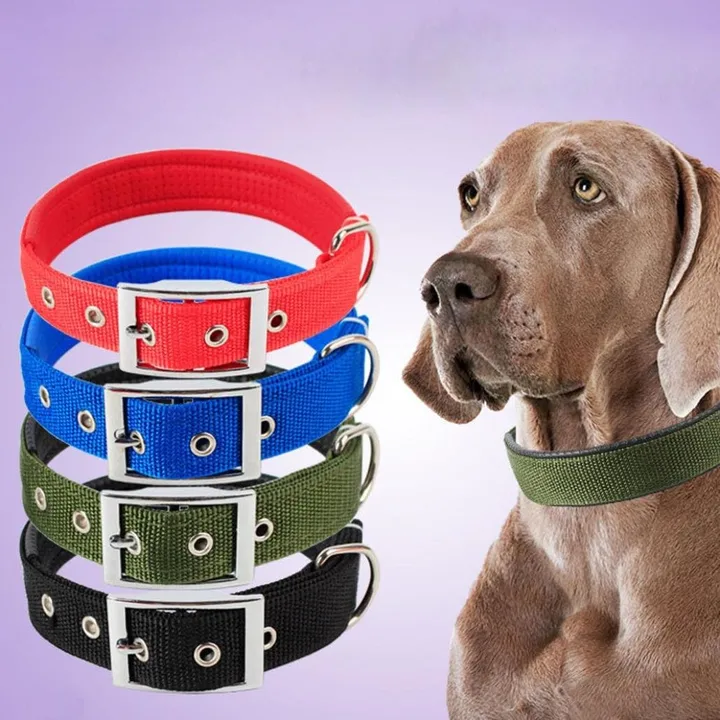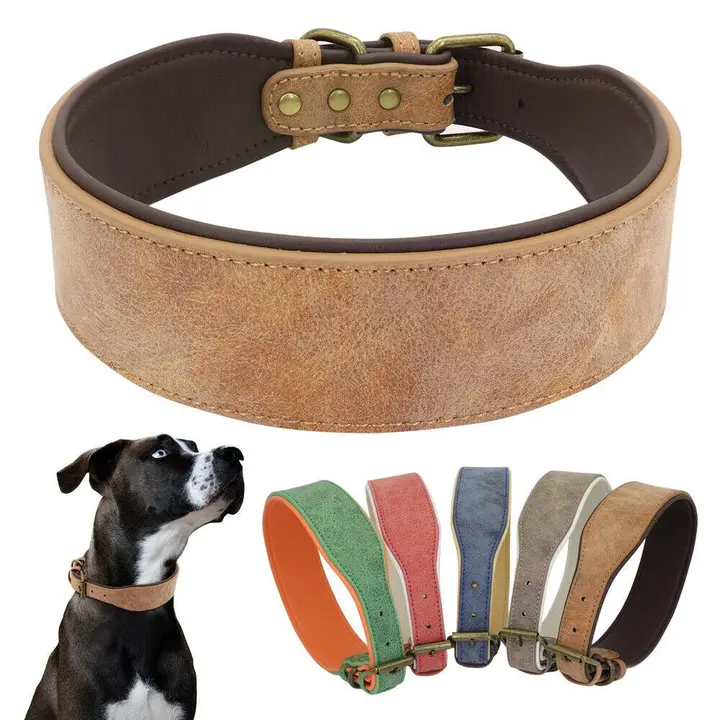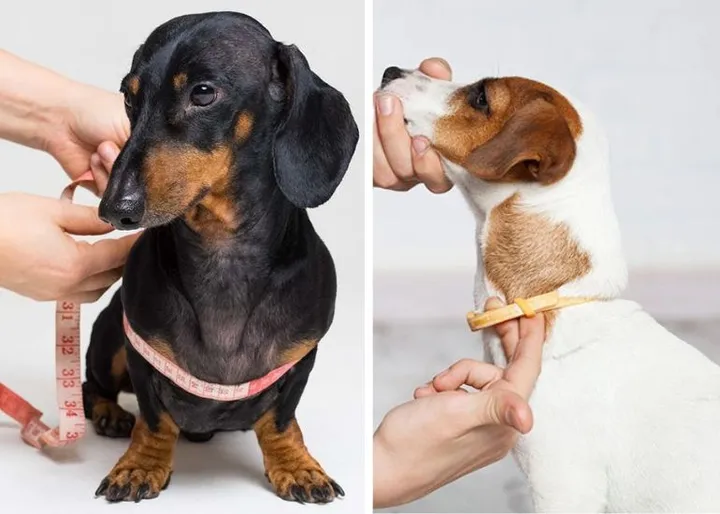When it comes to caring for your dog, one of the most important decisions you’ll make is choosing the right dog collar. It’s more than just an accessory dog collars are vital for your pet’s identification, safety, and training. With so many options available in the USA, it can be overwhelming to find the perfect collar that suits your dog’s size, behavior, and lifestyle. In this guide, we’ll cover everything you need to know, from the types of dog collars to how to choose the right size, and tips for maintaining and using collars safely.
Why Dog Collars Matter
Dog collars are not just decorative; they serve essential purposes that every dog owner needs to consider. Here’s why every dog in the USA should have a collar:
- Identification and Safety: A dog collar with an ID tag attached is often the quickest way for someone to return your pet if they wander off. Even in the age of microchips, visible tags provide immediate information.
- Control and Training: Whether you’re out for a walk or in the middle of a training session, a collar helps you maintain control of your dog. Certain types, like choke chains or martingale collars, are specifically designed for training purposes.
- Style and Personalization: Collars are a great way to add a little personality to your pet. From colorful nylon fabrics to reflective collars for nighttime visibility, there are many ways to make your dog’s collar unique.
Types of Dog Collars
The USA market is flooded with various dog collars, each suited for different needs. Here are the most common types:
Flat Collars
Flat collars are the most widely used and are perfect for everyday wear. They typically feature a simple buckle closure and come in a variety of nylon, leather, or fabric designs.
- Best for: Dogs that are calm and don’t pull on the leash excessively.
- Pros: Easy to use, available in many styles and materials, and can hold a tag with your dog’s identification information.
- Cons: May not provide enough control for strong or excitable dogs.
Martingale Collars
Also known as no slip collars, martingale collars offer more control than flat collars. They tighten slightly when your dog pulls, preventing them from slipping out without choking them.
- Best for: Dogs with narrow heads like Greyhounds or dogs prone to slipping out of traditional collars.
- Pros: Offers gentle correction without choking.
- Cons: Not ideal for small dogs or those who don’t need corrective collars.
Harness Collars
A harness is an alternative to a traditional collar, as it wraps around the dog’s body instead of just their neck. This evenly distributes pressure across the chest, making it a good option for small or respiratory sensitive dogs.
- Best for: Small breeds, dogs with respiratory issues, or dogs that pull hard on their leash.
- Pros: Provides more control and reduces strain on the neck.
- Cons: Can restrict movement if not properly fitted and may not be necessary for all dogs.
Choke Chains & Prong Collars
These collars are designed for training purposes and should only be used by experienced handlers. A choke chain tightens around the dog’s neck when the leash is pulled, offering a quick correction, while a prong collar has metal spikes that provide additional control.
- Best for: Professional trainers working with difficult to control dogs.
- Pros: Effective for correcting behavior in strong or stubborn dogs.
- Cons: Can cause injury if misused. Only for temporary training sessions.
Personalized Collars
Personalized collars are customized with your dog’s name and your contact information directly stitched or engraved onto the collar itself. This ensures your pet is always identifiable.
- Best for: Any dog! Especially useful for owners who want to avoid relying solely on a tag.
- Popular USA Brands: Look for options from USA based companies that specialize in personalized, handcrafted collars.
How to Choose the Right Dog Collar Size
Choosing the right size for your dog’s collar is crucial for their comfort and safety. A collar that is too tight can cause discomfort or injury, while one that is too loose may allow your dog to slip out.
Measuring Your Dog’s Neck
To find the correct collar size, follow these steps:
- Use a soft measuring tape to measure your dog’s neck where the collar would naturally sit.
- Add two inches to the measurement for larger dogs or one inch for smaller breeds. This ensures the collar won’t be too tight.
- Apply the “two finger rule” you should be able to slide two fingers comfortably between the collar and your dog’s neck.
| Dog Size | Neck Measurement (inches) | Recommended Collar Width |
| Small (e.g., Pug, Chihuahua) | 8″ – 12″ | 1/2″ |
| Medium (e.g., Beagle, Border Collie) | 12″ – 18″ | 3/4″ |
| Large (e.g., Labrador, German Shepherd) | 18″ – 24″ | 1″ |
The Best Dog Collars in the USA: Top Picks
Here’s a look at some of the best dog collars available in the USA, taking into account material, durability, and style.
Best Flat Collars
- Ruff wear Front Range Collar: Made from nylon with a reflective strip for night walks. Includes an easy to use buckle.
- Blueberry Pet Essentials: Known for its durability and style, this nylon collar comes in a wide variety of colors and sizes.
Best Martingale Collars
- Pet Safe Martingale Collar: An affordable yet sturdy option, perfect for training and control without harming your dog.
- Country Brook Pets Martingale: Offers high quality design with strong fabric and hardware, ensuring long lasting durability.
Best Personalized Dog Collars
- Go Tags Personalized Collar: Embroidered with your dog’s name and contact info. Made from durable nylon, this collar is both stylish and functional.
- Orvis Custom Dog Collar: An eco friendly, personalized option made from recycled materials, popular among USA buyers.
How to Maintain Your Dog Collar
Taking care of your dog’s collar is just as important as choosing the right one. Here are a few tips for keeping your dog’s collar in top shape:
- Cleaning: Regularly clean nylon and fabric collars by soaking them in warm water with a bit of mild detergent. For leather collars, use a leather cleaner and conditioner.
- Replacement Signs: If the collar shows fraying, broken buckle hardware, or excessive wear, it’s time to replace it.
- Storage: When not in use, store the collar in a dry, cool place to avoid moisture damage or mold growth, especially with fabric collars.
Safety Tips for Using Dog Collars
Your dog’s safety should always be your top priority. Here are some tips to ensure that their collar is safe and comfortable:
- Proper Fit: Ensure that the collar isn’t too tight or too loose. Always follow the “two finger rule.”
- Avoiding Injury: Don’t leave a collar on your dog 24/7, especially during playtime with other dogs or at bedtime.
- Microchip vs. Tag: Even with a microchip, your dog should wear a tag with your contact information. The microchip can only be read by a scanner, but a tag provides immediate identification.
Frequently Asked Questions About Dog Collars
What is the best dog collar for training?
Martingale collars are a great choice for training as they provide gentle correction without choking your dog.
How often should I replace my dog’s collar?
Replace the collar when you notice signs of wear, such as fraying, rusting hardware, or if your dog outgrows it.
Are there collars designed specifically for small dogs?
Yes, many brands offer nylon and fabric collars that are lightweight and comfortable for smaller breeds.
Conclusion: Choosing the Perfect Dog Collar for Your Furry Friend
Selecting the right dog collar ensures that your pet stays safe, comfortable, and stylish. Whether you’re looking for something durable for everyday wear, a harness for walks, or a personalized collar for added security, the USA market offers plenty of options. Just remember to measure carefully, maintain the collar regularly, and prioritize your dog’s comfort and safety.

Hi. My Name is Alexander Bell. I am a professional content writer since 2006.
18+ years of experience crafting compelling and authoritative content for diverse audiences.
🖋️ Specialize in formal article writing, combining meticulous research with engaging storytelling.
📚 Proven track record of delivering high-quality content across various industries, including technology, finance, and healthcare.
💡 Skilled in SEO best practices and optimizing content for digital platforms to maximize reach and engagement.
🔍 Strong research capabilities, adept at distilling complex information into accessible, informative articles.
🎓 BA in English Literature









